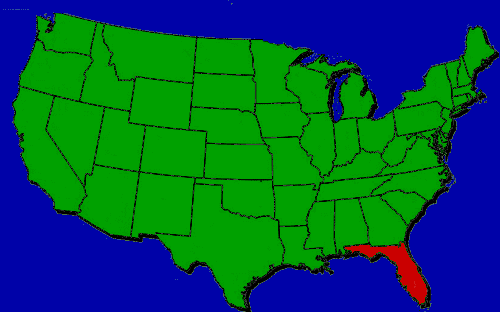
Circle the area on this map

C. A peninsula is a piece of land surrounded by water along the majority of its border while still being connected to a mainland from which it extends. Some of Florida’s coastal areas are being flooded more and more often by high tides – even on sunny days. Saltwater can cause erosion or damage structures by rusting steel beams or steel reinforcing rods inside concrete.
B. The Miami metropolitan area in southeast Florida is the state’s most populous area, with more than 6 million people. The urbanized area – about 100 miles long and five miles wide – lies between the Everglades and the Atlantic Ocean.
A. Barrier islands are coastal landforms and a type of dune system that form parallel to a mainland coast. Miami Beach and Surfside were built on natural and man-made barrier islands between the Atlantic Ocean and Biscayne Bay. The area is an average of 4.4 feet above mean sea level and subject to tidal flooding, which has increased as climate change raises sea levels.
D. Florida’s limestone base dissolves relatively easily in rainwater, which becomes acidic as it seeps through the topsoil. The rock has become honeycombed with cavities and systems of underwater caves and springs, which supply most of the water used by residents. When a cavity becomes too big to support its ceiling, it suddenly gives way, collapsing the clay and sand above to leave a cavernous sinkhole at the surface.